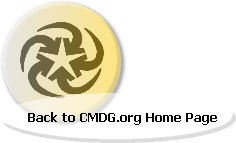Drug Induced Movement Disorders Neuroleptic malignant syndrome is the rarest of the neuroleptic induced movement disorders. It is the most serious and represents a neurologic emergency in most cases.
It has now been reported to occur with all drugs that effect the central dopaminergic system (including dopamine agonists and levodopa). There's an isolated report of neuroleptic
malignant syndrome in a patient on a trycyclic medication. It is likely an idiosyncratic reaction and patients can, if needed, be given the same agent again without recurrence.
It is estimated that 0.5-1% of patients exposed to neuroleptics will develop this syndrome. Most patients will develop it shortly after initial exposure and 90% within two weeks of
starting the neuroleptic. It can occur with all the neuroleptics but haldol and trifluperazine are the most common. It has also been seen with clozapine and metoclopramide.
The classic triad involves the autonomic nervous system (fever in 100%), the extrapyramidal system (rigidity), and cognitive changes. The two characteristic laboratory findings
reported in 75% of cases are a high CPK and leukocytosis. 95% of patients are iron deficient. The CSF is usually normal. The EEG can show diffuse slowing. Other features include
tachypnea (78%), diaphoresis (60%), and labile blood pressure (54%). The temperature does not usually exceed 41°C and often peaks before the motor systems become
prominent. The most frequent extrapyramidal findings include rigidity (90%) and tremor (56%). Dystonia and chorea have also been reported. Mental status changes occur in 75% of
patients. This starts as drowsiness and confusion but can progress to stupor and coma. Other symptoms can include seizures, pyramidal tract findings, ocular flutter, cardiac arrhythmias.
Physical exhaustion, dehydration, hyponatremia, young male gender, affective disorders, thyrotoxicosis, or prior brain pathology all increase the rate of this syndrome developing.
An increased risk occurs in patients combining haldol with lithium. Once symptoms develop progression is quite rapid and reaches peak intensity in about 72 hours. This can very from
45 minutes to as long as 65 days. Some cases remain mild and clear up without intervention. The duration of the symptoms can last from 8 hours to 40 days (longer with parental
medication). With early recognition and aggressive treatment there is only a 5% mortality rate (much improved in the last 20 years). Most patients who survive make a full recovery.
Some are left with permanent parkinsonism, ataxia, and dementia. Re-occurrences have been described following exposure to the same neuroleptic but this is not common. Pathophysiology
The pathophysiology is not completely understood but is thought to involve 3 systems. These include abnormalities in the:
Treatment Early recognition is extremely important to reduce mortality. Without therapy this syndrome will resolve on its own over several weeks but with active treatment improvement will
occur within 48-72 hours. The first phase of treatment is supportive therapy with adequate hydration and metabolite (electrolyte) stabilization with cooling blankets to reduce hyperthermia. Ventilatory
assistance may be required and occasionally dialysis is necessary for renal dysfunction. Drug therapy starts with discontinuing the neuroleptic. There
are a variety of other effective medications that can be used but the two most frequent ones include Dantrolene sodium and bromocriptine (individually or combined). These drugs
reduce the mortality and shorten the course of the syndrome. Dantrolene can be given intravenously or orally starting with 2-3 mg per kg doses divided TID up to a total of 10
mg/kg/day. Bromocriptine can be given orally or by NG tube starting with 2.5 mg TID and increasing every 24 hours by 2.5 mg TID until a response is seen or until a maximum dose of 60 mg is achieved.
It is reasonable to start both drugs at the same time with intravenous Dantrolene and oral bromocriptine. Once symptoms start to resolve the Dantrolene can be discontinued and the bromocriptine can be maintained. The
duration of treatment should be at least for ten days for oral neuroleptics, and two to three weeks for parental drugs. Other treatments that can be used include levodopa, pergolide, benzodiazepines, and rarely ECT. If this syndrome occurs in the setting of Parkinson's disease the treatment is basically the same except the parkinsonian medication should be re-instituted as quickly as possible.
Because of the risk of this syndrome drug holidays are no longer routinely recommended for Parkinson's disease. If the neuroleptic is to be reintroduced a waiting period of two
weeks should be used for oral medication at least six weeks for parental medication. It would be prudent to use a different neuroleptic than the one that originally caused the syndrome.
